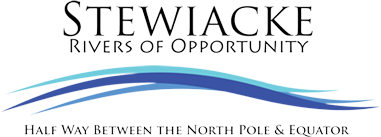
Overview
The Town of Stewiacke will be implementing a cross connection control (CCC) program in 2022. The requirement for a cross connection control program was included in the Town’s approval to operate a water utility in 2020. Therefore, we are required by Nova Scotia Environment (NSE) to enforce the installation of Backflow Prevention Devices (BFP) on water service lines where there is greater potential for backflow.
The first stage in the Cross Connection Control Program is to perform a survey of all water services in the town to identify minor, moderate or high/severe risks of backflow. Services categorized as moderate or high/severe will be required to install an appropriate backflow prevention device. This survey was completed in 2021, based on CSA B64.10, Guide to Degree of Hazard, and the Town identified a number of water services that will be required to install BFP devices to minimize the risk of a potential contaminant entering the distribution system from a customer’s premise through backflow, and help protect the public’s safety by preventing drinking water contamination.
BFP device requirements will be enforced under Schedule “D” Water Utility Schedule of Rules and Regulations.
New forms and applications for BFP devices will be available at the Town Office starting in 2022.
Backflow Prevention Devices
Backflow prevention devices are required in buildings where there is a greater potential for backflow and contamination of the water supply.
These include:
- industrial, commercial, and institutional buildings
- apartment buildings with more than four units
- sprinkler service lines
- “…all new services where in the opinion of the Town, there is a potential risk of contamination of the potable water supply system resulting from backflow or back pressure from the individual premise.”
Backflow Prevention Methods
The following are recognized methods or types of backflow prevention devices used for the prevention of backflow:
- Air Gap (AG)
- Reduced Pressure Principle Assembly (RP)
- Double Check Valve Assembly (DCVA)
Selection Process
The type of BFP device is based on the degree of hazard that the specific location represents to the drinking water supply. A Backflow Prevention Device Application Form must be filled out by a professional engineer or certified plumber, in accordance with the CSA B64.10 and CSA B64 series, to determine the degree of hazard.
| CSA Standard No. | Type of Device | Minor Degree of Hazard | Moderate Degree of Hazard | Severe Degree of Hazard | Device Under Continuous Pressure |
|---|---|---|---|---|---|
| - | Air Gap | X | X | X | No |
| B64 | Reduced Pressure Principle Assembly (RP) | X | X | X | Yes |
| B64 | Double Check Value Assembly (DCVA) | X | X | - | Yes |
| Degree of Hazard | Definition |
|---|---|
| Minor (MH) | Any cross connection or potential cross connection that constitutes only a nuisance and that results in a reduction in the only aesthetic quality of the water. |
| Moderate (MoH) | Any minor hazard (MH) connection that has a low probability of becoming a severe hazard. |
| Severe/High (HH) | Any type of cross connection or potential cross connection involving water that has additives or substances that under any concentration, can create a danger to health. |
Testing and Maintenance
It is the customer’s responsibility to ensure that all backflow prevention devices are tested upon installation and annually thereafter. If the assembly fails its test, maintenance or repair is immediately required. The assembly must be retested immediately after any repairs, maintenance, or when the assembly has been removed, reinstalled or changed locations.
Backflow prevention assemblies must be annually tested, at minimum, because they have internal seals and springs that are subject to wear or fatigue.
Annual Backflow Prevention Device Test
BFP testing must be carried out by a certified tester.
A record card must be placed on or beside the BFP indicating:
- The test date
- The tester’s certificate number, name, initials, and the name of his/her employer
- The location, type, manufacturer, serial number, and size of the device
- The name and address of the owner of the device
- A copy of annual BFP test results must be sent to the Municipality. This is ultimately the customer’s responsibility. However, backflow prevention testers commonly submit this form.
Schedule “D” Water Utility Schedule of Rules and Regulations specify that the Town may give notice to correct any non-compliance with the Cross Connection Control & Backflow Prevention section of the schedule. This includes the annual testing of BFPs. The Town will work with the property owner towards a solution, but backflow hazards will be taken seriously as they are potential risks to public health, and the Town may suspend water service in cases of non-compliance.
Documents or questions may be submitted to:
Mail: Town Of Stewiacke, 295 George St, PO Box 8, Stewiacke NS, B0N 2J0
Email:
Phone: 902-639-2231

